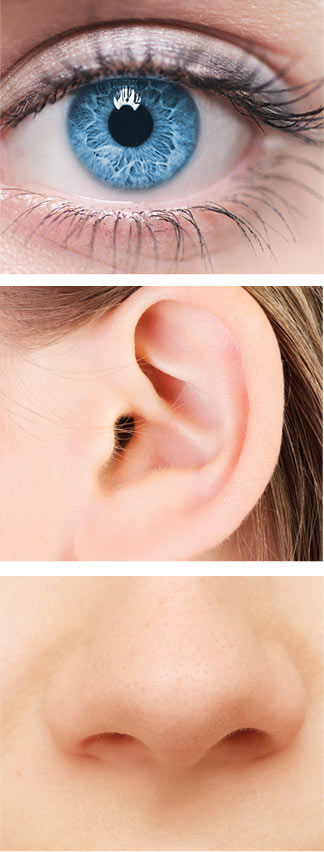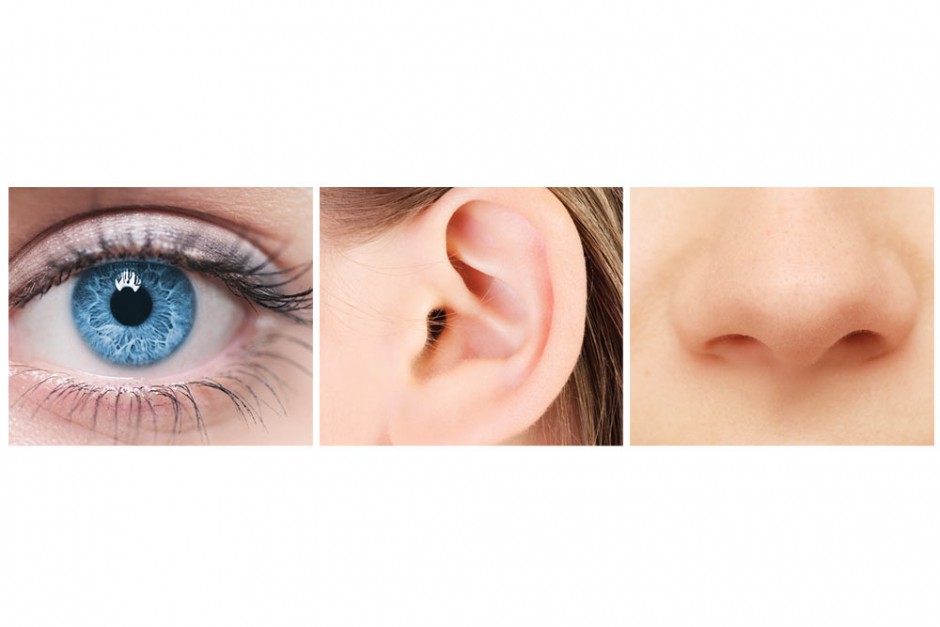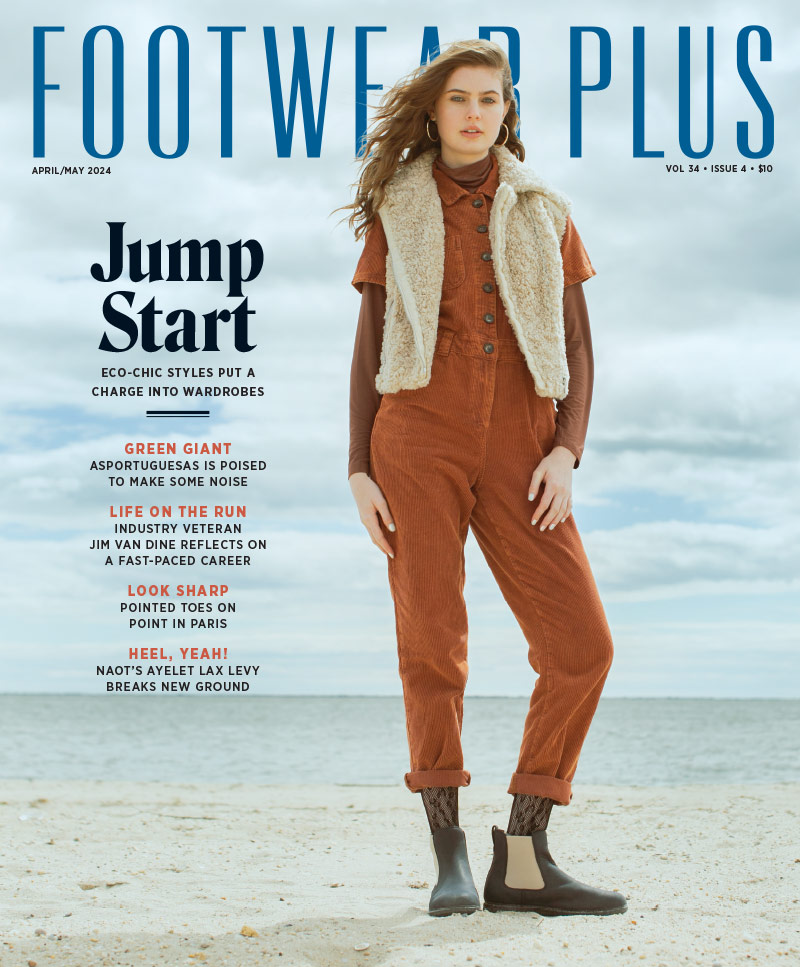 Sensory marketing has become a hot topic in retail in recent years. Recognizing that every aspect of the ambiance can influence a shopper’s mood—color, music, signage, even the height at which racks are placed—stores now do everything from painting display cases green to inspire feelings of good health to piping in the scent of coconut to make shoppers think of summer. The goal? Get customers to stay in your store longer, spend more and come back. And research shows sensory marketing really works, if you do it right. A recent Loyola University Maryland study showed that color increases brand recognition by as much as 80 percent, while Nike found that adding scents to stores made shoppers 84 percent more likely to buy shoes.
Sensory marketing has become a hot topic in retail in recent years. Recognizing that every aspect of the ambiance can influence a shopper’s mood—color, music, signage, even the height at which racks are placed—stores now do everything from painting display cases green to inspire feelings of good health to piping in the scent of coconut to make shoppers think of summer. The goal? Get customers to stay in your store longer, spend more and come back. And research shows sensory marketing really works, if you do it right. A recent Loyola University Maryland study showed that color increases brand recognition by as much as 80 percent, while Nike found that adding scents to stores made shoppers 84 percent more likely to buy shoes.
Here, experts share the secrets of sensory marketing.
Scent: Caroline Fabrigas is the CEO Scent Marketing and the Scent Marketing Institute. Now a nonprofit organization, the Institute was founded by her late husband, Harald Vogt, to educate the public about scent marketing and promote best practices.
1) How do scents affect shoppers?
Your olfactory bulb, which controls your sense of smell, is in your limbic system, your brain’s memory center. That’s why scent can bring up a memory even more quickly and powerfully than an image or a sound can. The classic example is the aroma of baking cookies. It triggers memories of walking into Grandma’s house as a child for many adults and gives them an instant feeling of comfort and home. In a retail setting, an aroma can make your heart race or calm you down and encourage you to linger.
2) How does scent marketing work and why might a retailer want to use it?
A scent marketer works with you to craft a signature scent that captures your store’s identity and, if done right, creates a positive emotional effect on customers as powerful as the baking cookies example. You can even develop a sort of cult following. We created a scent for a hospitality chain in 2007, and guests loved it so much that, at their request, we developed candles and room diffusers they could buy. That’s a great brand extension because every time they use them, it triggers memories of the hotel chain and their visit.
We start with a brand analysis to help pinpoint the client’s identity. Then we translate this to our master perfumers and they distill it into three to six aroma profiles for the client to choose from during a sniffing session where we come to their store with a tabletop unit. We’ll smell the scents on blotters and then in the air through a special device because it’s the best way to discern ambient scent. It’s completely different from perfume on your skin.
3) How does the scent get diffused in a store?
Scent marketing companies provide clients with equipment that goes into the HVAC system or can be put somewhere discreet on the store floor. They’ll help you calibrate it for the time of day and days of the week you want it to go on and off, depending on whether you want shoppers to smell it on an ongoing basis or have gentle wafts come in and out. Then you just refill it once a month.
4) Do certain scents appeal to certain kinds of shoppers?
It’s not that simple. Citrus is clean and bright, so it gives you a fresh, uplifting feeling. But there’s a whole range of citrus scents. Some are much more exotic. They make you feel a whole different way. People tend to think woody notes appeal more to men, but some woods are very sensual and elegant. To a scent marketer, creating the right scent for your store or brand is about figuring out where that citrus or woody note might fit within what you’re trying to communicate and balancing it the right way.
5) Could a store on a tight budget just buy plug-in fragrance or scented candles, or would you caution against that?
It depends on your end game. When you do a signature scent, you’re creating something emblematic of your store or brand’s values. You put in the same amount of time and care you would to creating your logo. If you just want your store to smell better, there are a lot of pleasant single-note aromas like vanilla and grapefruit. But your customer will smell those scents elsewhere, so they won’t give him an affinity with your store.
One of the worst things you can do is pick an arbitrary scent that isn’t associated with anything in your store. You confuse the customer. Make sure the scent you choose fits the environment.
For stores on a limited budget, we have a portfolio of ambient scents. Customers may encounter the aroma in a different part of the country or distribution channel, but the aroma will be unique enough to help distinguish your store.
6) Is working with a scent marketer affordable for an independent retailer?
It absolutely can be. There are leasing programs, smaller units and more basic scents that are less precious and exotic, so they’re less costly.
7) What about customers with allergies or adverse reactions to aromas?
Anybody can be allergic to anything. I spent 28 years in the beauty industry, and even with hypoallergenic brands, some people claimed to be allergic. But the molecules from ambient scents are very small and travel high in the air, so they don’t touch shoppers. Also, members of the Scent Marketing Institute have rigorous safety standards and make sure scents are calibrated and diffused in the right way, so we hear complaints very seldom.
8) What would you say to retailers who argue that leather is the best scent for any shoe store?
I had a client that sold shoes and handbags, and leather was an important part of the aroma we created for them. But that’s like assuming coffee shops and bakeries naturally smell good. The truth is that in a bakery they only bake at certain times of day. They don’t get the smell all day long. So guess what? They pipe it in so they’ll have that yummy smell all the time. The same is true of coffee shops. Let’s say they’re making grilled cheese sandwiches at lunch. The shop will smell like grilled cheese. That’s enhancing, but it’s not what they want. So they imbue that delicious coffee aroma because they know scent has such an immediate, powerful visceral impact. It’s one of the most powerful marketing tools you can use for your business.
Sound: Prescriptive Music is a music-branding company with offices in Toronto and Los Angeles. In addition to independent retailers, the company works with Lululemon and Marriott Hotels & Resorts and offers a program combining scent marketing with sound. Below, Vice President of Business Partnerships Uri Burstein, Director of Music Programming Alix Rumsey and Director of Communications Bryan Osuszek share their insights on sensory branding through sound.
1) How can music help a footwear retailer?
U.B.: Having the right music in a store triggers an emotional response, the same way good interior design does. If you get the mix right, you draw in your core demographic and create a level of both heightened interest and comfort that makes them feel this space and this product are perfect for them.
BO: The wrong music does the opposite. If it doesn’t fit the product and the clientele, shoppers feel uncomfortable and eager to leave. It would happen if a 17-year-old girl walked into Forever 21 and heard Brahms. Or, say, a middle-aged man decided to get healthy and walked into a store to buy his first pair of running shoes. If he heard techno music, he’d instantly think, “This isn’t for me.”
If the music is incongruous, it’s jarring. One of the best real examples we’ve heard is having “Jingle Bells” in Spanish playing in July because a worker put his iPod on “shuffle.”
2) How do music-branding companies help a store get the right music mix?
A.R.: We start by finding out what makes them tick. We read all their branding information and interview key personnel about their core demographic, what separates them from their competition and what makes people come into their store. Then we translate those cues into playlists for different times of day and days of the week.
A knowledgeable music supervisor understands what will appeal to your core customers. For instance, women like some hip-hop because it’s cool and modern, but you have to be very careful about lyrical content if your store is predominantly patronized by women. They also tend to like artists such as Justin Timberlake, but men don’t like the female equivalents. They don’t respond well to hearing Katy Perry or Taylor Swift in a retail setting.
3) Do you have advice for retailers who prefer to create their own music mix?
U.B.: The biggest problem with curating your own music mix is that even if you use iTunes or Spotify, they are for personal use, not commercial use. And that can get you into trouble with music licensing companies.
4) Are retailers really taking a risk by playing an iPod in a store?
U.B.: Absolutely. ASCAP, SESAC and BMI—the three largest music licensing companies—have a staff that actually goes out and looks for this. They’ll walk into a store and say, “Hey, love your playlist! What are you guys playing?” And someone from the store will innocently say, “Oh, we have an iPod in the back.” That’s how they find out that people are breaking the law. The fines are quite hefty.
5) What can retailers do aside from hiring a music-branding firm?
B.O.: Music-branding services tend to be pretty affordable. The core of our business is mom-and-pop single location retailers and restaurants. But for those who don’t want to use a music-branding company like ours as a curative consultant, we have software they can use to legally curate their own playlist from our library under our licensing umbrella. They can change it or add songs as they like.
A.R.: Whatever you do, don’t let the people who work behind the cash register control your music. Licensing issues aside, even if your shop assistant says she has the best taste in music, she doesn’t necessarily have the best taste for your store.
6) Once you’ve created a playlist for a client, how does the client actually get the music?
A.R.: We give them a hard drive that stores the music. Tracks are downloaded into the system, transferred through the Internet and held on the player on the client’s side. We don’t stream because if there’s a thunderstorm, everyone loses music.
7) How often do you change the music for clients?
U.B.: We update the playlist every 30 days, taking out some tracks and adding others to make sure the music stays on brand. If the retailer’s core demographic is young, it’s a constantly moving beast. Our music supervisors literally listen to music all day, trying to find the next big thing. When they do, they make sure it’s properly licensed. We also have deejays and other music style-makers working for us to make sure the playlists are as ahead of the times as possible.
8) How important is it to make sure the music in your store fits with other aspects of sensory marketing?
A.R.: They’re joined together quite dramatically. If you walk in and hear a great soundtrack but the place looks like it hasn’t been redecorated since 1973, it’s not going to make sense.
Sight: Amy Troutman is a senior color consultant at Mandil, an architecture and design company located in Denver, CO. She is also secretary of the International Association of Color Consultants/Designers—North America.
1) How do the colors in a store affect shoppers?
People don’t analyze why they’re only spending five minutes in one place and several hours in another, but color has a definite psychological impact. When you want people to stay longer in a retail space, you paint it a cool, welcoming color that doesn’t overwhelm them. If you want them to be drawn in but leave quickly, you use a more agitating color like bright yellow or red. Restaurants often use bold colors because they don’t want people to stay that long, whereas coffee shops tend to have colors that create a relaxed atmosphere that invites patrons to linger over their cup of cappuccino.
2) Do people of all ages respond to color the same way?
We’re all wired somewhat the same way in our response to color, though there are certain considerations. Teenagers want to see trendy, fashion-forward colors, while most older people feel more comfortable with more subdued shades. You have to adjust your color selections based on the age group you’re targeting.
3) Should the product you’re selling play a role in the color you choose?
Absolutely. Your product and even your logo should be incorporated into the three-dimensional environment. That’s why Starbucks uses so much muted brown in its stores. They’re trying to evoke that dark chocolate espresso tone. As a customer, you don’t recognize this connection unless you analyze it, but they’ve put their brand into their environment through color. So, if you’re selling men’s shoes, you might use a rich leather tone for, say, a back accent wall.
4) Why not paint all the walls that color?
You don’t want shoppers to walk into your store and see the walls first. You want them to notice the product. People often use paint to make an impact in a retail space without realizing they’re overpowering and distracting from the product they’re selling.
To make sure the shoes are what draws shoppers’ attention, do display pieces in pops of color. If you have a front window with pedestals that hold shoes, make them an eye-catching shade like a bright orange or use a texture like wood. Then consider your space in general. What else do you want to highlight? Obviously, you want people to know where the cash register is so they can pay for their shoes easily. Give that wall a punch of color.
5) Is there a rule about the number of colors retailers should use?
Our rule of thumb is three to five. You don’t want too many contrasting colors in a space because psychologically speaking, it can irritate people. They won’t know why they feel annoyed, but they’ll be eager to leave. It’s also a good idea to use complementary colors. (You can find these on a color wheel.)
6) Should the colors you use change seasonally?
That depends on how trendy your product is. If you’re selling men’s dress shoes, you could pick a color scheme that works and stick with it because the colors of dress shoes are always the same. If you’re selling fitness shoes, the colors constantly change. I would find a neutral palette and stick with that, then change your display pops to coordinate with changing trends.
7) How can a color consultant help a retailer market through color?
Color consultants understand the dynamics of people’s psychological response to color. They will sit down with you to develop a profile of who your buyer is, what your product is, what you’re trying to achieve through color and to analyze what colors would work best based on these factors as well as on the space and configuration of your store. If there’s a competitor that sells the exact same product, a color consultant will help you figure out what can set you apart from the competition. When you get the right colors in a retail environment, it can make a big difference for your store and your sales. •




